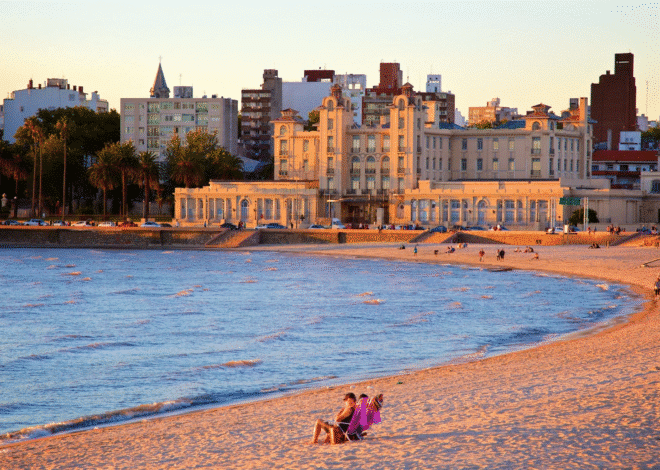
What is Sustainable Travel? How to Travel More Sustainably Without Breaking the Bank
The world is opening up, and the desire to explore is stronger than ever. But as we book flights and plan itineraries, a growing number of people are looking for ways to reduce their environmental footprint. The idea of sustainable travel often comes with the misconception that it’s expensive, exclusive, and difficult to achieve. The truth is, many of the most impactful choices you can make are also the most economical. It’s about being mindful, intentional, and adopting a few simple habits. This guide will show you how to travel more sustainably without breaking the bank, proving that you can be a responsible traveler while still enjoying a fantastic adventure.
1. Choose Your Transportation Wisely
Your mode of transportation is often the biggest contributor to your carbon footprint. Making smarter choices here can have a significant impact.
- Fly Direct: If you must fly, opt for direct flights. A significant portion of a plane’s fuel is burned during takeoff and landing, so fewer flights mean a smaller footprint.
- Embrace Ground Travel: For shorter distances, consider taking a train or bus. Trains, in particular, are an incredibly efficient and scenic way to travel. They are far more eco-friendly than flying and often offer a more comfortable and relaxed journey.
- Explore Local Public Transport: Once you arrive at your destination, skip the taxi or ride-share apps and use the local public transportation system. It’s a fantastic way to immerse yourself in the local culture, save money, and reduce your emissions.
2. Pack Light and Smart
Overpacking is not only a hassle; it has a direct environmental impact. Lighter baggage on a plane means less fuel is needed.
- Embrace a Minimalist Wardrobe: Plan your outfits to be versatile and multi-purpose. A well-thought-out capsule wardrobe can easily last you an entire trip. Packing less also means you have more space in your bag, reducing the temptation to buy unnecessary souvenirs.
- Use Reusable Items: Avoid single-use plastics by packing a reusable water bottle, a coffee mug, and a set of cutlery. This simple habit can drastically reduce your waste on the go. Many airports and public places now have water refill stations. For a seamless and organized packing experience, consider minimalist and durable travel accessories from a brand like MONOTN (https://monotn.com/).
3. Support Local and Eat Sustainably
Where you spend your money has a big impact on the communities you visit. By choosing local, you’re not just getting an authentic experience; you’re also supporting the local economy and reducing the carbon footprint of imported goods.
- Dine at Local Eateries: Seek out family-owned restaurants and food stalls instead of big chain establishments. These places often use locally sourced ingredients, which reduces the energy needed for transportation. Plus, you’ll discover the true flavors of the destination. You can get more ideas for great local cuisine from our article on the Top 10 Underrated Travel Destinations for 2025.
- Visit Farmers’ Markets: Shopping at a local market is a great way to meet the people who live in the community and buy fresh, seasonal produce. This is also a fantastic way to find unique, locally-made products for souvenirs.
4. Choose Eco-Friendly Accommodations
While you don’t need to stay in an expensive eco-lodge, you can make more sustainable choices when booking your stay.
- Look for Eco-Certifications: Many hotels and guesthouses now have sustainability certifications (like Green Key or B Corp). Look for these on their websites or booking platforms.
- Ask About Practices: Call ahead and ask about their sustainability efforts. Do they use energy-efficient lighting? Do they have a towel reuse program? Do they offer recycling? A simple phone call can tell you a lot.
- Stay in a Homestay or Guesthouse: These accommodations often have a smaller footprint than large hotels and provide a more authentic cultural exchange.
5. Be Mindful of Your Energy and Water Consumption
Your habits at home should follow you on your travels. A few simple actions can make a big difference.
- Turn Off Lights and AC: When you leave your hotel room, turn off all the lights and the air conditioning. It’s a small action with a big cumulative impact.
- Reuse Towels and Linens: Many hotels have a reuse program. Take advantage of it. It saves water and reduces the energy used for washing.
- Shorten Your Shower: Be mindful of your water usage. Aim for shorter showers and turn off the tap while you’re brushing your teeth.
6. Leave No Trace
The principle of leaving a place better than you found it is at the heart of responsible tourism.
- Take Your Trash with You: If you’re hiking or visiting a natural area, pack out everything you bring in.
- Respect Wildlife: Observe animals from a distance and never feed them.
- Stay on Marked Trails: This simple action prevents damage to delicate ecosystems and reduces erosion.
Learning how to travel more sustainably isn’t about grand gestures; it’s about a series of small, intentional choices that add up. By making these budget-friendly decisions, you can reduce your impact on the environment and the communities you visit, all while having a richer, more authentic travel experience.

